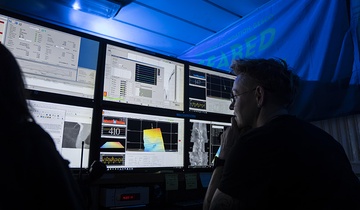A tsunami reporting station situated in the Pacific Ocean that is currently off line is to be upgraded in a joint operation involving New Zealand and United States government agencies.
The New Zealand government is co-funding an operation with the US National Oceanic and Atmospheric Administration (NOAA)'s National Weather Service.
The operation will replace equipment on the Deep-ocean Assessment and Reporting of Tsunami (DART) station, known as Station 54401, which is situated 1185km north-east of Auckland.
Station 54401 comprises a surface buoy and a bottom pressure recorder (BPR) sitting on the ocean floor, nearly 6km below the surface.
The station is one of a network of 39 operated by NOAA that supplies data to the NOAA Pacific Tsunami Warning Centre (PTWC) in Hawaii.
The PTWC alerts Pacific countries, including New Zealand, to tsunami that can have significant impacts far from their original source. This type of tsunami is known as a distant source tsunami and is what caused so much devastation during the Sumatra 2004 Event in the Indian Ocean.
No data has been received from Station 54401 since late September 2016, GNS Science Director of Natural Hazards Gill Jolly says.
Data to forecast, and warn of, a distant-source tsunami
“The DART station helps provide New Zealand with data to forecast, and warn of, a distant-source tsunami. We will be using the National Institute of Water and Atmosphere (NIWA)’s deep-sea research vessel Tangaroa and their marine moorings expertise to work alongside NOAA technicians to retrieve, repair, and redeploy the DART station,” Dr Jolly says.
NOAA is sending over two of its technicians and a container load of equipment that they’ll use to replace the tsunami detection station.
“By making a contribution to the cost of replacing the DART equipment, the New Zealand government has made replacing the station a more feasible option for NOAA,” Dr Jolly says.
The operation, which begins on 19 September, will involve bringing the BPR to the surface and replacing it and the surface buoy with new equipment. The voyage to and from the station and the upgrade work is expected to take between eight and 10 days.
The New Zealand contribution is part of $3 million in initial funding from the Ministry of Business, Innovation and Employment (MBIE)’s Strategic Science Investment Fund for GNS Science to enhance GeoNet hazard warning system and to help repair the DART station.
This collaboration is part of the coordination facilitated by the UNESCO Intergovernmental Working Group for the Pacific Tsunami Warning System and it is anticipated that New Zealand, the United States and Australia will continue to work together to improve and sustain the tsunami warning system in the Pacific.
The New Zealand government agencies involved in the operation are MBIE, GNS Science, NIWA, the Ministry of Civil Defence and Emergency Management and the Ministry of Foreign Affairs and Trade.







